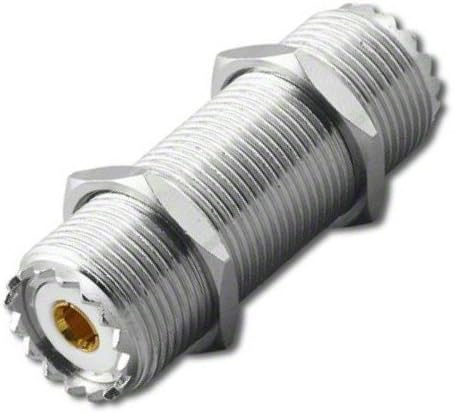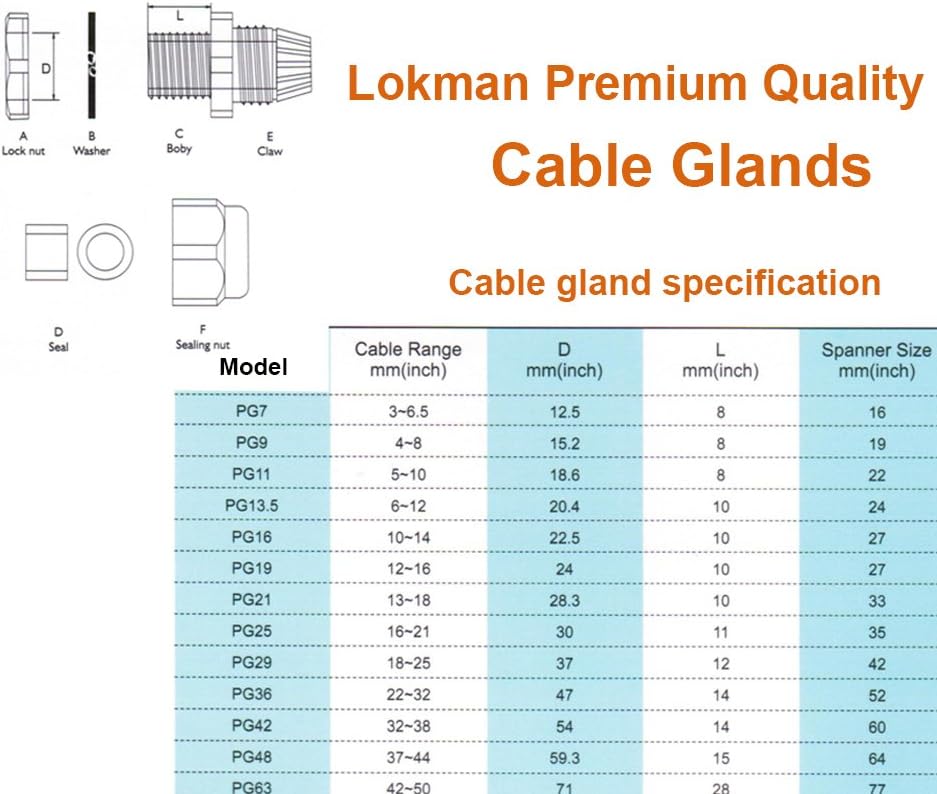TLDR: When using gaskets or O-rings to help keep the weather out of a coax entry panel or an enclosure that uses bulkhead or barrel connectors to pass rf from the outside to the inside, do the gaskets go on the outside or on the inside of the panel?
Am I over-thinking this?
Yes, absolutely!

That doesn't mean that I can't have some fun with it, though.
My initial thought was that it was a 'no-brainer' to put the gaskets on the outside, but I've seen instructions for "cable glands" that state that the gaskets for those are supposed to go on the inside.
I'm making a coax entry panel out of 1/4"-thick aluminum plate that I will set into the bottom side of a double-hung window opening.
For passing my coax feedlines through the plate I will be using several N-female to N-female bulkhead connectors, along with several female-to-female UHF 'barrel' connectors.
The type-N bulkhead connectors look like this:


You can see that there's a bulkhead 'shelf' or 'flange' into which an orange silicone gasket is inset, which should help keep the rain from passing through. There is also an inner-toothed lockwasher and a nut for securing the connector to the panel.
The UHF barrel connectors look like this:

Unlike the N bulkhead connectors, the UHF barrels do not have a built-in flange, rather there are 5/8-inch nuts (and I also have some stainless outer-toothed lockwashers) to hold them in place. I have some approx. 15mm ID O-rings that I can use with the UHF barrels, but those will likely not actually prevent ingress of water via the threads, so I may also add a bead of silicone sealant when I install them.
In my application I really don't need or expect to have IP-67 or IP-68 level waterproofing, in fact I will just be using typical weatherstripping foam between the edges of the aluminum panel and the window sill and/or the bottom of the window sash, along with stuffing some thick foam into the gap between the top and bottom sashes that will be left as a result of having the bottom sash rest on the top of the aluminum panel, mostly to keep out insects, and only secondarily to keep out the weather. But I'm also interested in the more general question as it applies to keeping the rain out of enclosures for outdoor matching networks and the like (although no doubt for some applications it may be preferable to supply 'weep holes' to allow possible condensation to drip out rather than attempting to hermetically seal the enclosure - I don't have a method for pumping dry nitrogen inside, after all).
But I was wondering which side the gasket or O-ring should go on - the outside or the inside - or whether it even makes a difference. I haven't found any explicit instructions for the N-bulkheads - at least not in the Amphenol catalog pages or diagrams that I've seen (for example,
https://www.amphenolrf.com/172124.html and
https://www.amphenolrf.com/library/download/link/link_id/587568/parent/172124/. But maybe there is an industry standard practice or a mil-spec or whatever.
I will also be using several #PG-7 and #PG-9 cable glands (for passing relay and rotor control cables through the plate), and I discovered that in the description for one vendor's parts it says the following (from
https://www.amazon.com/Lokman-Plastic-Waterproof-Adjustable-Glands/dp/B06Y5HGYK2):
"WATERPROOF- IP68 Cable glands come with gaskets for the bulkhead mounting.
It makes the seal against the inside of the surface you're installing them on. thus are waterproof."
The cable gland specs don't seem to say anything about it, though:
 Do I trust amazon vendors to know what they're talking about? Absolutely not...
Do I trust amazon vendors to know what they're talking about? Absolutely not...Interestingly, Adafruit sells a "flanged weatherproof enclosure with PG-7 cable glands" (
https://www.adafruit.com/product/3931), where it's obvious from the photo that they have put the gaskets on the outside of the box rather than on the inside:


So, is there any consensus? Or just be adventurous and flip a coin?
Yes, I am definitely overthinking this. (Maybe I should have added a poll!)
FWIW I'm going to go with my initial thoughts and put the gaskets on the outside.
(BTW, I will also be adding several vintage E. F. Johnson model 135-51 and 135-52 ceramic feed-through "lead-in bushings" to accommodate ladder line and end-fed wires - to see what those look like check out page 9 of this 1948 catalog:
http://bh.hallikainen.org/wiki/uploads/EFJohnson.pdfor page 30 of the pdf (which is actually marked as page 31) of this illustrated history of Johnson insulators:
https://www.nia.org/publications/old_familiar_strains/OFS%202000_10%20vol%207%20no%204-5.pdf - they come with fiber gaskets to prevent the ceramic from touching the panel material, if not for weatherproofing duty.)
 Win a FREE Membership!
Win a FREE Membership!